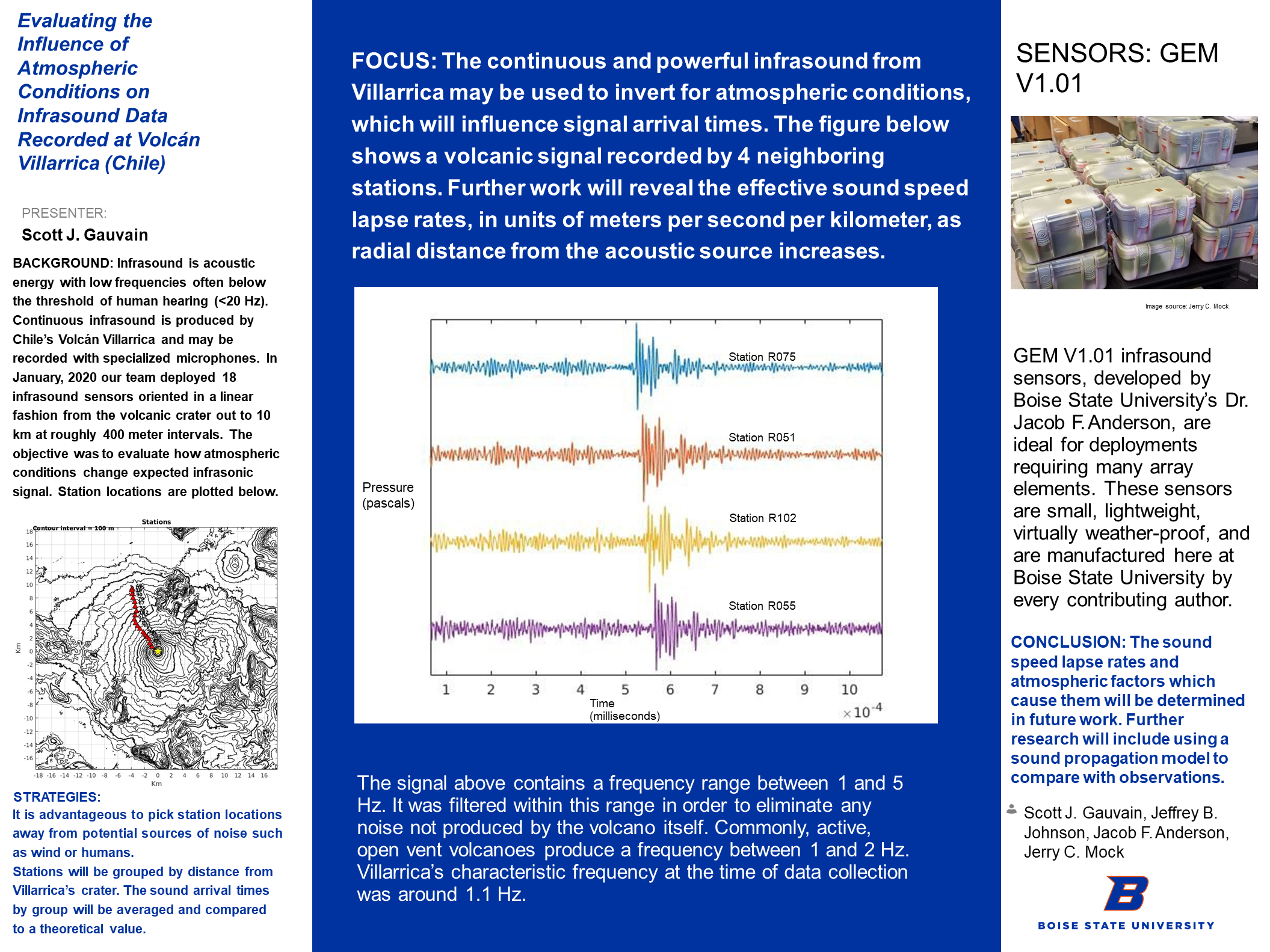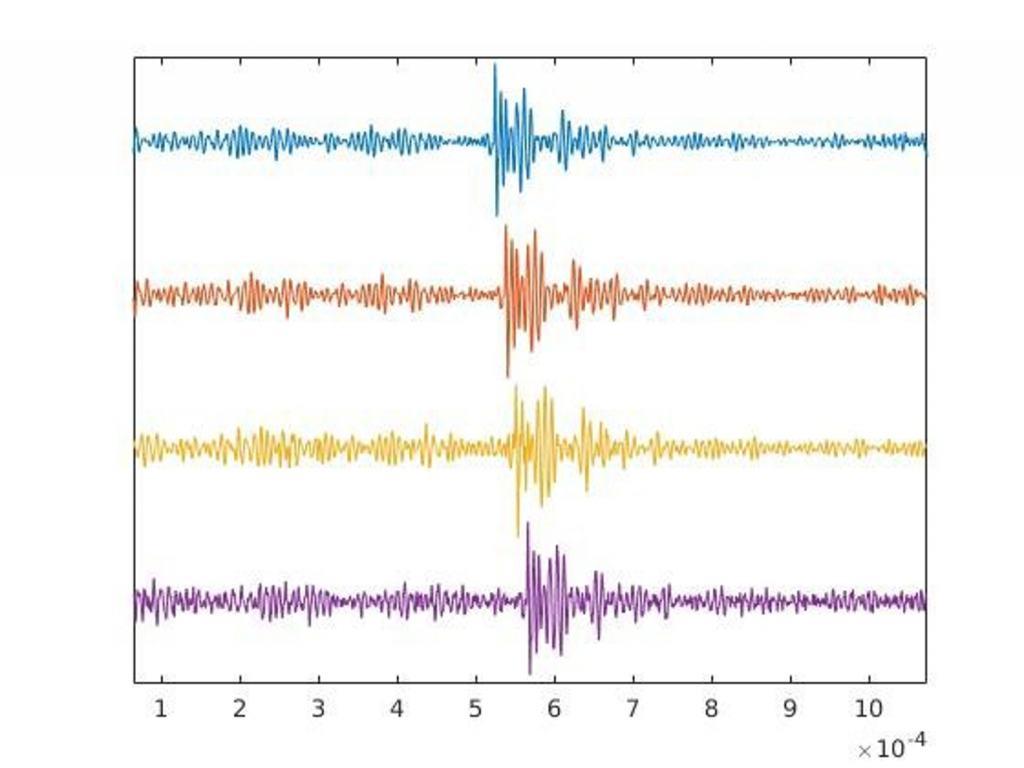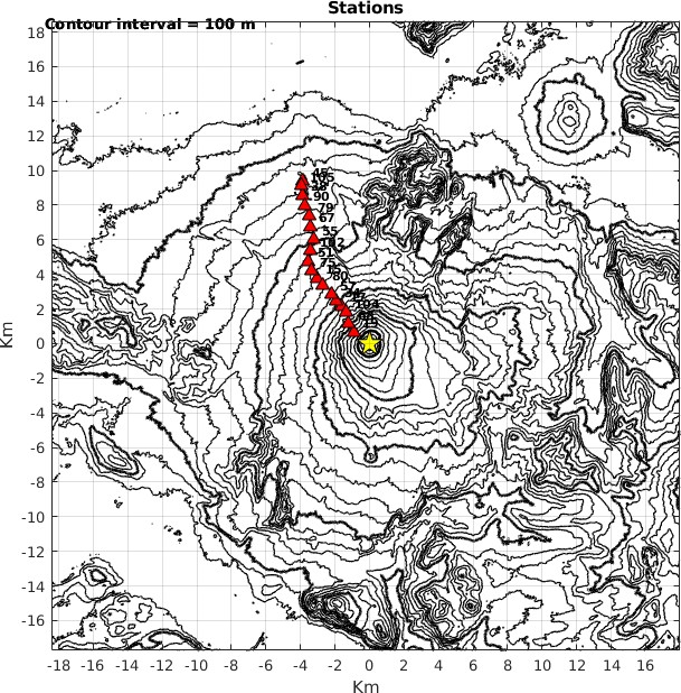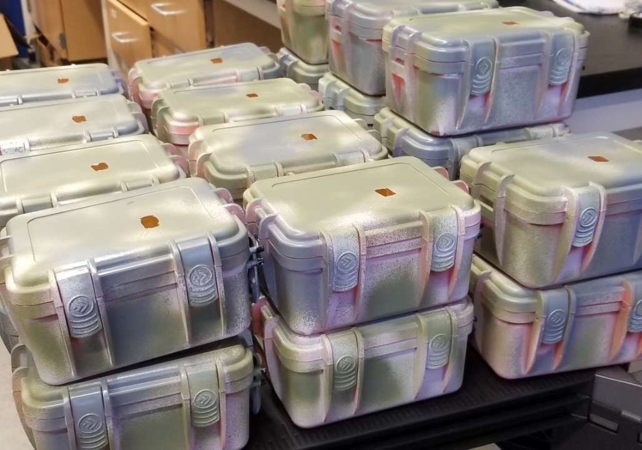Scott J. Gauvain, Dr. Jeffrey B. Johnson, Dr. Jacob Anderson, Jerry C. Mock

Focus
The continuous and powerful infrasound from Villarrica may be used to invert for atmospheric conditions, which will influence signal arrival times. The figure below shows a volcanic signal recorded by 4 neighboring stations. Further work will reveal the effective sound speed lapse rates, in units of meters per second per kilometer, as radial distance from the acoustic source increases.

The signal above contains a frequency range between 1 and 5 Hz. It was filtered within this range in order to eliminate any noise not produced by the volcano itself. Commonly, active, open vent volcanoes produce a frequency between 1 and 2 Hz. Villarrica’s characteristic frequency at the time of data collection was around 1.1 Hz.
Background
Infrasound is acoustic energy with low frequencies often below the threshold of human hearing (<20 Hz). Continuous infrasound is produced by Chile’s Volcán Villarrica and may be recorded with specialized microphones. In January, 2020 our team deployed 18 infrasound sensors oriented in a linear fashion from the volcanic crater out to 10 km at roughly 400 meter intervals. The objective was to evaluate how atmospheric conditions change expected infrasonic signal. Station locations are plotted below.

Strategies
It is advantageous to pick station locations away from potential sources of noise such as wind or humans.
Stations will be grouped by distance from Villarrica’s crater. The sound arrival times by group will be averaged and compared to a theoretical value.
Sensors: GEM V1.01
GEM V1.01 infrasound sensors, developed by Boise State University’s Dr. Jacob F. Anderson, are ideal for deployments requiring many array elements. These sensors are small, lightweight, virtually weather-proof, and are manufactured here at Boise State University by every contributing author.

Conclusion
The sound speed lapse rates and atmospheric factors which cause them will be determined in future work. Further research will include using a sound propagation model to compare with observations.